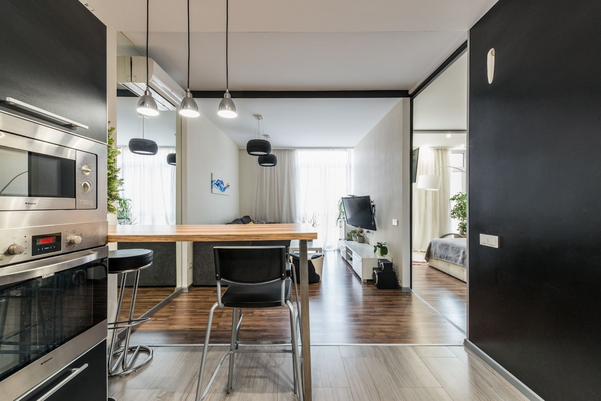
Fridges are one of the most common household appliances and are also one of the most expensive. Compared to other common electronic appliances like electric kettles, microwaves and toasters, fridges are much heavier on electricity consumption. But how much energy do fridges use?
Electricity Consumption of Fridges
When discussing electricity consumption, we measure the energy a device uses in kilowatt-hours (kWh). A kilowatt-hour is equivalent to 1,000 watts being used for every hour.
The average fridge-freezer typically has an electricity consumption between 100 and 200 kWh per year, with around 150 kWh/per year being reasonably typical.
This means that your fridge freezer would take up about 1.9% of your total energy usage – roughly equivalent to the amount you would need to power an electric kettle for 6,000 hours.
While it might not seem like much when you look at it this way, 1.9% is significant when considering how much energy your home uses and how many homes there are in the country.
Considering the bigger picture, making an effort to reduce your fridge’s electricity consumption would be beneficial to the environment and help reduce your monthly electricity bill.
10 Tips To Reduce Your Fridge’s Electricity Consumption
Here are a few handy tips to reduce the average energy consumption of your fridge and how to use your appliance efficiently:
-
Switch Energy Suppliers
Switching energy providers can save you money on your utility bill, and the switch is typically quick and easy. Before switching, use an energy comparison site to find an energy provider with the best tariff.
-
Keep the Fridge Doors Closed
When a refrigerator or freezer is opened, incredible air escapes and warm air is allowed in, which raises the amount of power required to keep the contents cold. Avoid constantly opening and closing the refrigerator or freezer; instead, take all the contents required out of the fridge at once when cooking.
-
Check That the Seals Are Functional
Refrigerator and freezer seals that aren’t functioning correctly will let warm air in, increasing the power required to keep the contents cool. Check your fridge and freezer seals regularly and replace faulty seals to save on energy consumption.
-
Make Sure the Temperature Is Suitable
The power required to run a refrigerator or freezer rises when the temperature is lowered. By reading the instruction booklet, ensure your refrigerator or freezer is set enough.
-
Defrost Your Fridge-Freezer Frequently
A refrigerator or freezer that has ice buildup cannot function properly. When the ice starts to accumulate, defrost your refrigerator and freezer. You can do this by emptying its contents, turning the appliance off, and placing a towel below the appliance to catch water as the ice defrosts. Clean the defrosted refrigerator and freezer with a damp cloth and some all-purpose cleaner before turning the appliance back on.
-
Keep Your Fridge in a Cool Space
A refrigerator or freezer will require more power to keep its contents cold if placed in the sun or close to other heat-producing devices. Place refrigerators and freezers in the kitchen area that is the coolest, if feasible.
-
Keep the Coils Clean
Better airflow is made possible by keeping the coils in the rear of a refrigerator free of dust, reducing the work the compressor must perform to maintain the refrigerator cooling. Use a duster to keep the back of the appliance clean and dust free.
-
Keep Warm Food Out of the Fridge
When warm food is placed in a refrigerator or freezer, the interior temperature rises and more power is required to keep the contents cold. Let warm food cool before putting it in the refrigerator or freezer.
-
Clear Space Both Inside and Around Your Refrigerator
Refrigerators require space for proper airflow. Make sure there are at least two inches of space between the walls around your refrigerator and it. Watch out for shelves packed too tightly, like a refrigerator that needs ventilation to keep food cool. Your appliance will require more energy to maintain cooling if there is improper air circulation inside and outside the refrigerator.
-
Upgrade to a More Energy-efficient Refrigerator
The power needed to keep a refrigerator operating is substantial. They use energy continuously throughout the day, unlike many other appliances. Energy-efficient refrigerators consume less electricity, which allows you to reduce your energy costs. Consider switching to an energy-efficient appliance the next time you need a new fridge or freezer.
Final Thoughts
We hope this article has provided helpful information about how much energy your fridge uses and how you can reduce your carbon footprint by making more environmentally friendly choices.
Ref: 3083.27024




 POSTED BY
POSTED BY 

